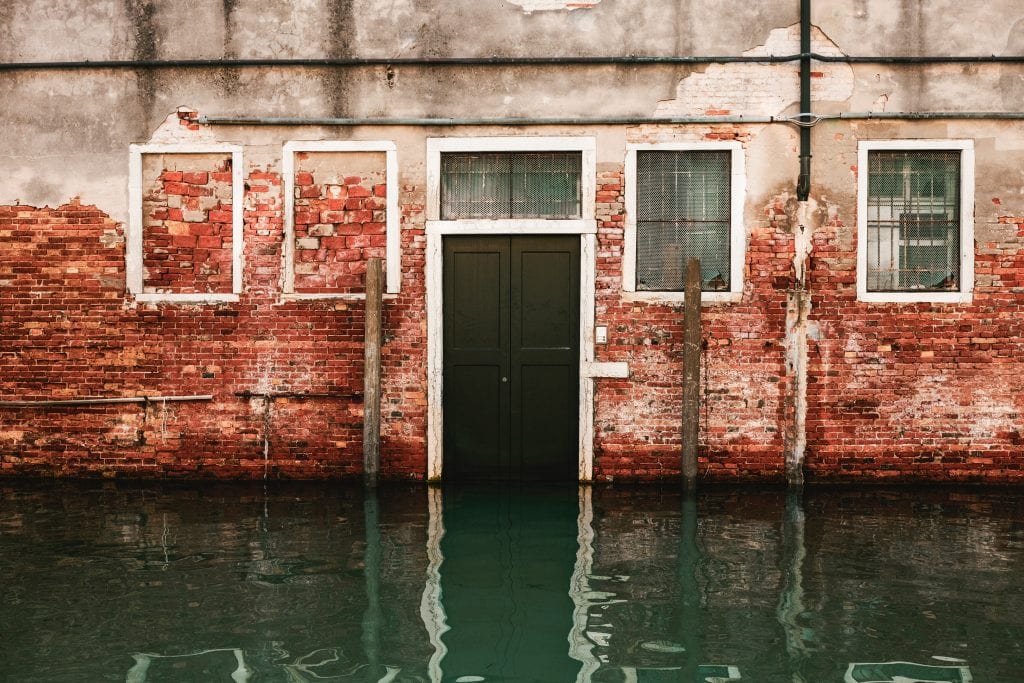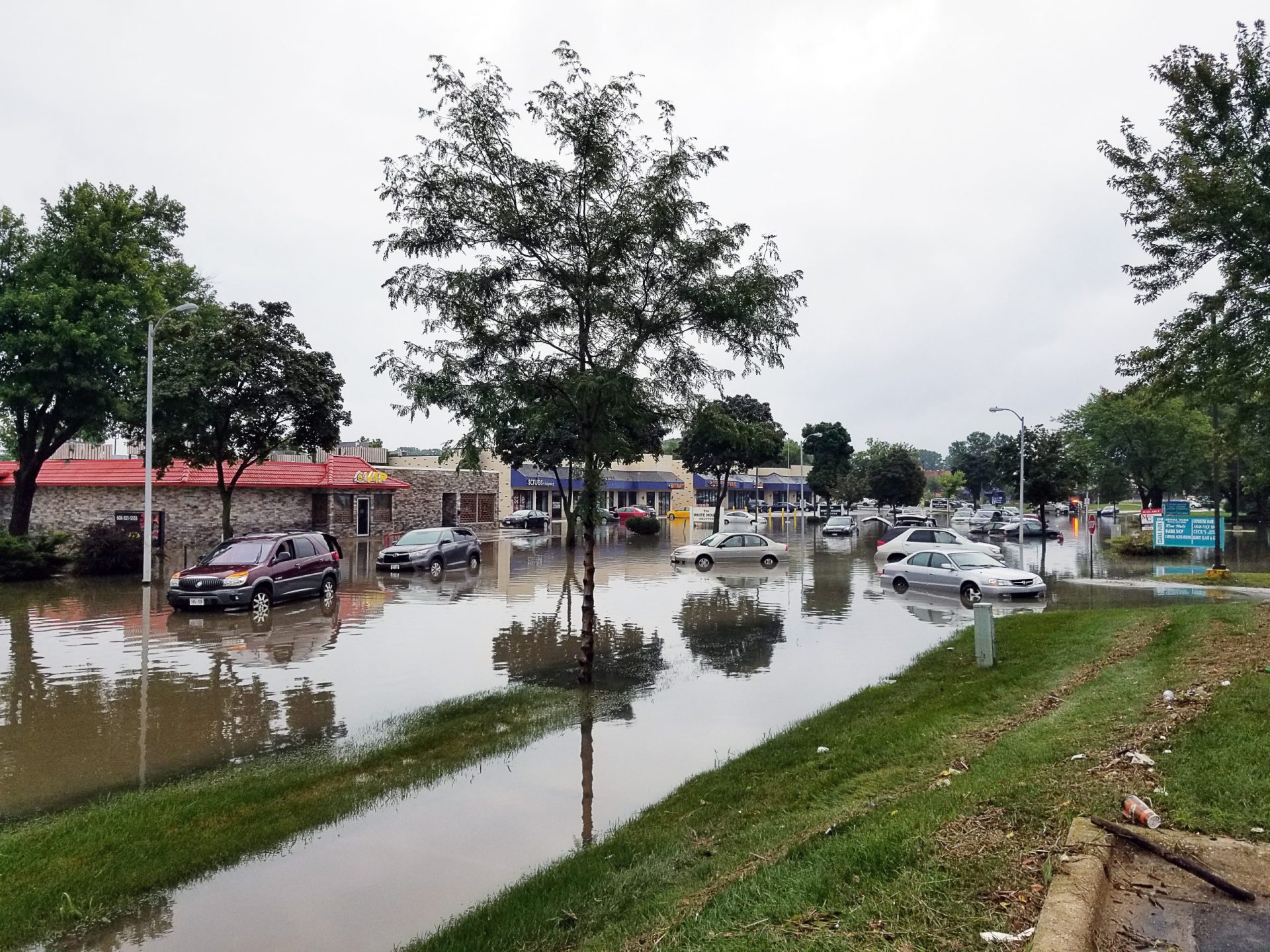
“We won’t flood again” was what we heard in the first week of January this year. Wivenhoe Dam had been built in response to the devastating Brisbane floods in 1974. It cant happen again. It was raining and it wasn’t stopping. We were hearing reports of cars and people being washed away in Toowoomba – Australia’s largest inland city. Toowoomba is on the Great Diving Range.
At that stage on the 12th of January Brisbane CBD had flooded. The CBD had evacuated. Brisbane was a ghost town. Water flooded into high rise buildings and basements, electrical systems powering storage software were flooded out creating chaos.We thought we would be OK here in Strathpine. The North Pine Dam a few kms from our office was about to open the spillway to relive the chance of it overflowing. We were told to leave. The fuel station over the road was already under water.
Our building was not going to flood but access to it might so we packed up and went home. How did that affect us and the Storage Software we provide? Well we were forced to redirect the phone system to mobiles and we had no choice but to go home.
We use Salesforce.com so our CRM, thankfully, wasn’t affected. It had no effect on our email systems as we use Google professional mail. Both of these systems are in the Cloud. We pay a subscription fee to use them and we are happy we do. We had no communication issues at all during the flood. Then we started to get calls about Self Storage and our Storage Software program.
A customer then said to me “How would victims who were flooded find storage and do you have working website we can use to do online bookings and payment?
The power of the Web and Social media was at our fingertips. We sent out a quick newsletter to our customers and asked – “Do you have dry and secure space? Many sites responded that day. We compiled a list of sites that could help victims and posted it on our web site. We posted it to Facebook and Twitter as well. Once we did that over 800 people viewed it on the first day. We were surprised at the response.
We got a call from a Brisbane resident who was on holidays in the US. They were desperate for help for their goods and a very extensive wine collection. We asked National Storage to help out and they took charge for the customer, sorting out their needs by generator power!
National Storage continued to trade on despite widespread blackouts. They had a plan. As a SiteLink customer they could access their data anywhere -this is why choosing a reliable storage software is critical! On a laptop powered by the car, other branches helping, it all did not matter, their solution was able to be used even in the most critical of circumstances. Other customer’s not so lucky with one site being completely inundated over the roof with nothing really salvageable.
We had been through our own disaster with email a year ago. We had been using MS Exchange and one morning we had no email. The email server had been corrupted during an update. What to do? But call in the MCSE Exchange expert at $220 per hour to fix it. After several hours and lots of phone calls it was unrecoverable. We made the decision there and then that this would not happen again.
We migrated to Google mail. Our mails are now in the cloud and our office can be hit by a missile now, it won’t matter to email…
At a small business meeting soon after the floods we talked IT. It was pretty apparent; plenty of businesses did not prepare or consider the consequences of flooding to their IT infrastructure. Just because Brisbane flooded did not mean that customers were overly sympathetic to business not being contactable.

Here is our shortlist of core things to do for an impending flood or closedown.
- Make a plan and update it.
- Make site all staff understand their role in the plan.
- Ensure core mission critical contact systems can remain running.
- Update your website and social media so customers know what’s happened
- Back up critical files to the web.
- Ensure paper documents that pertain to the business are protected. Scan them and store them on the web.
Since the January floods we have installed a cloud based PABX system that allows staff to use our phones anywhere if we need to. We enjoy lower call costs and we can customise it on the web interface. Recently a deadly wave of Tornadoes struck north Carolina. The data centre where SiteLink is housed was not affected. No loss of service and even if it had gone out, SiteLink Web Edition customers can still access valuable data in offline mode. Customer records and reports available even of the internet or connectivity is lost.
Our business and its core systems have migrated to the cloud. Am I concerned about security? No, am I concerned someone is trolling through all of our secrets? No.
Do I worry when it rains now? No. Am I worried about email? No.
Self Storage sites can make themselves disaster resistant using SiteLink Web edition and cloud based PABX and online backup solutions. The old client software on PC’s with USB backups is out-dated and if of site backups are not diligently done every day, at risk of loss in the event of a sudden event. Computers get zapped, power goes out. Data is lost every day.
We asked Mike Berry, Director of IT at National Storage to comment:
There are several factors to consider:
- Customer goods – the impact will be determined by the severity of the event. The best we can do is convince customers to take out insurance on their goods in their unit. Of course certain events will not be covered, as evidenced by the actions of insurance companies post the Brisbane floods. There may, however, be events that will trigger a valid claim. The outcome of insurable events will be in the hands of customers ie as to whether they took out insurance.
- Centre hardware – there may well be circumstances that do not allow centre staff to safeguard their essential equipment, but in some circumstances, it is likely that they will have sufficient time to move essential equipment to “higher ground.” In the event that they do not have sufficient time and the equipment is destroyed, they need to have good relationships with their hardware supplier. For multi-site operators, it is recommended that they have a standard PC environment and the supplier maintains an up-to-date image of the PC. If a new PC is required, the hardware supplier can quickly re-image the new PC and deliver it to site.
- Essential software – all operators need to purchase a suite of software programs in order to run their business. Make sure you keep them safe and not less than annually, audit them to ensure that you still have. Copies of Windows and Office have a habit of magically vapourising. You will need all of the software to re-establish your systems. Don’t forget software such as PTI or Access Ezy.
- Centre data – all facilities generate a raft of files from spreadsheets to documents across all aspects of the business. Establish a sound, understandable data structure on one of the PC’s and, for the want of a better description, call it the “server” PC and store all centre files on the PC. Back it up every day with a rotating series of 7 backup CD’s or USB drives (using the KISS principle). Make sure you have at least one of the backups offsite every day. It will be a simple five minute process to reload all of your essential daily files back onto your new PC.
- Storage software – whether you use StorMan, Winsen or a host of other local database systems, again, back it up every day with a rotating series of 7 backup CD’s or USB drives (using the KISS principle). Make sure you have at least one of the backups offsite every day. It will be a simple process to reload all of your essential daily files back onto your new PC.
- Give serious consideration to converting your main storage database to a web-based application. There are a host of benefits, but in the context of a disaster, your software provider is ensuring that your database is being backed up daily (or even more often) and getting up and running again is as simple as logging onto another PC. The second benefit is that the web-based database is available to you anywhere – even at home. In a disaster, you need to be able to get access to your customer base immediately.
- Of course, the holy grail of disasters is to have a disaster recovery plan. For most operators this will be easier said than done. They take a fair amount of thought, effort and diligence to put into place. They may also involve some cost to disaster-proof your business and this is where it generally puts off most people as there is always something else to spend money on.
In conclusion, ask the shopkeepers in Toowoomba how much notice they got to get out. No time for backups….
If you would like to see how a storage software like SiteLink can enhance your business please contact our friendly team, or get a free demo!
Book an online demo today and see for yourself how SiteLink makes it easy to manage your self storage facility to the highest standards. Simply fill in the form below to get started.